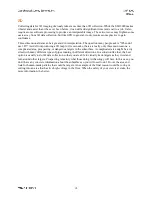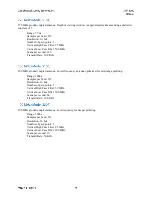
Collecting data for 3D imaging obviously takes more time than 2D collection. While the SIR 3000 makes
it faster and easier than it has ever been before, it can still add significant time (and cost) to a job. It also
requires some software processing to produce an interpretable image. These two issues may frighten some
users away from 3D data collection, but like GPR in general, it only requires some practice to gain
confidence.
Three-dimensional data can be a great aid in interpretation. The question many people ask is “When do I
use 3D?” Aside from producing a 3D map for its own sake, there are really only three main reasons: a
complicated area, prospecting, or dangerous targets in the subsurface. A complicated area might be a city
street with many different types of pipes running in different directions. In a situation like that, the best
option is usually to do 3D data collection so that you are able to visually track targets as they twist and
turn around other targets. Prospecting is mainly what those doing Archaeology will face. In this case, you
don’t have any concrete information about the subsurface so you will need to do 3D over the area and
look for human-made patterns that could be targets. An example of the final reason would be coring or
cutting into an area that has live high-voltage in the floor. When the safety of your crew is at stake, the
more information, the better.
















































